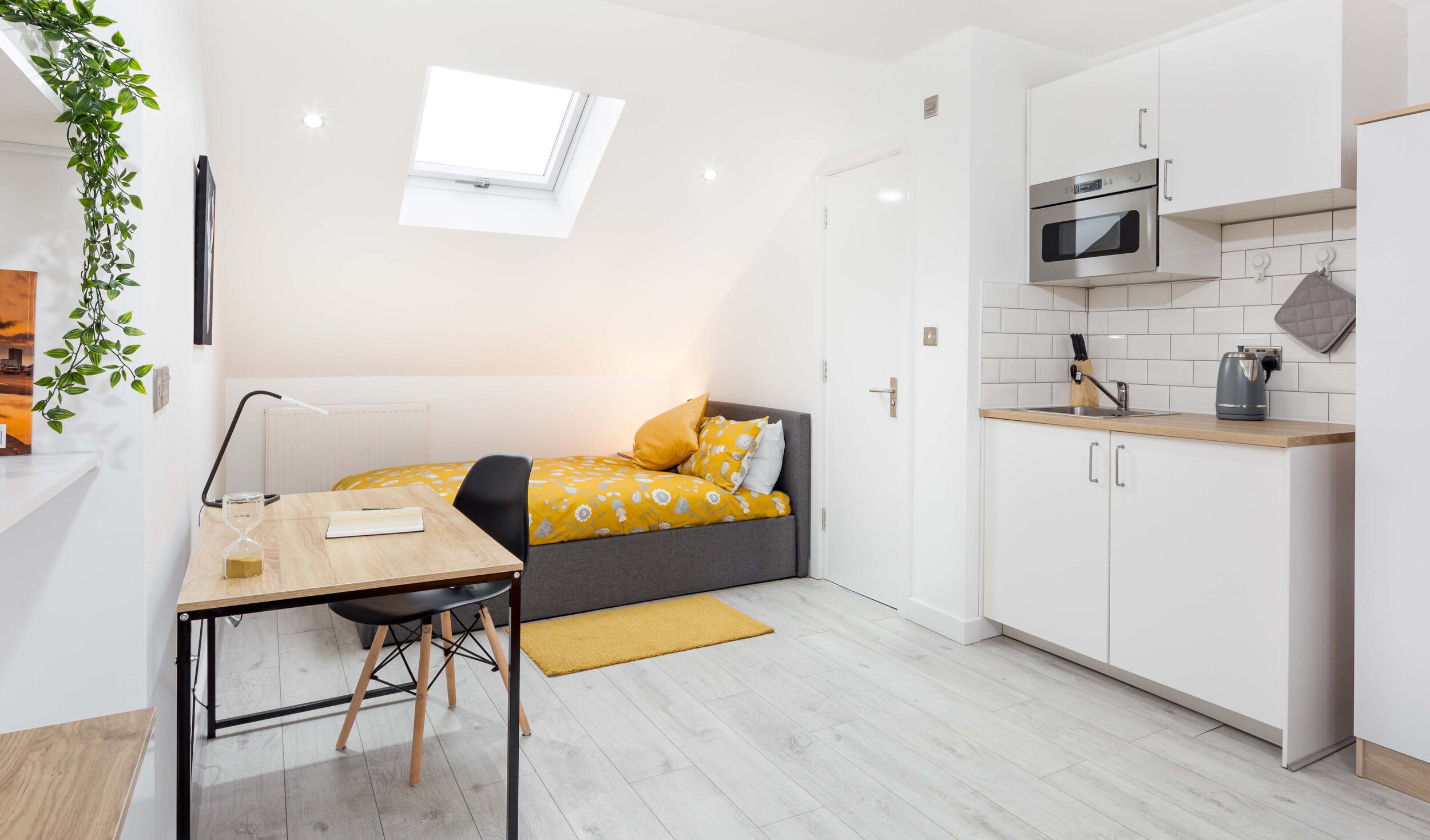Pandemic-proofing your HMO
By Giovanni Patania, Director at Windsor&Patania Architects. In this article, he gives tips to make sure your HMO has all the resources to survive future instability.
The past 12 months have brought many social and environmental issues to the fore. The need for social distancing, an ability to work from – and enjoy spending time in – your home, and the lack of travel options have been just some of the challenges that global communities have faced throughout the coronavirus pandemic.
For owners of co-living spaces, it has been a testing time. Tenants are seeking more space, a desire for privacy but also to be part of a community when ‘normal’ socialising seems impossible for the near future.
However, the past year has also presented an opportunity for HMO landlords to get ahead of the competition and consider how their properties can entice a growing generation of young professionals. This generation may not have the cash to put down a deposit on a house, but they still want a clean, modern, bright accommodation suitable for working from home, socialising and with easy access to a city centre once restrictions are lifted.
There could soon be an abundance of co-living spaces grappling for the attention of tenants, as more commercial properties are forced to shutter. A report from the Social Market Foundation released last year unveiled research suggesting that the UK government should aspire to renovate empty shopping centres into residential living quarters, a move which seems to be gathering pace across the UK.
Our Team at HMO Architect put together ten simple ways to ‘pandemic-proof’ your co-living space, to attract the best tenants and ensure your HMO portfolio continues to thrive well into the future.
Offer a like-minded community of people…
Many start-ups offering the very best in modern-day co-living are marketing their HMOs as aspirational, convenient, and cost-effective ways to live with friends. Common, Ollie, StartCity and many more offer ‘matchmaking’ services via their apps to ensure new tenants are matched with like-minded people with similar goals and interests. Having access to a shared kitchen and living room is a positive, sociable aspect to living in an HMO, and should be marketed as such.
… but keep privacy in mind
During a pandemic, we spend much more time inside, and much of that time alone. Having a clean, bright and modern living space that makes the most of every inch of space is vital. Include an en-suite bathroom in each room where possible. Comfortable furniture, decent curtains, and locks on the doors will go a long way with privacy-conscious tenants. You could even offer the use of a safe for an additional fee.
Accommodate the WFH revolution
Working from home is here to stay, in some form or another. While we are likely to see a gradual return to the office for many over the next year, this will probably be staggered, and many companies are offering their employees hybrid options of working from home and in an office. When possible, a separate home office with 3-4 desks and bright, airy windows can collect a premium in rental income. If your HMO isn’t able to accommodate this setup, adding a desk with a comfortable chair and view from a window will also help tenants acclimatise to this new way of working.
Introduce ‘sanitising stations’
Creating a hand sanitising station in the HMO entrance area and other communal areas is a great way to reassure your tenants that you take their health and safety seriously. Posters hung throughout the property to remind tenants to build lasting habits around washing their hands and cleaning surfaces can also be helpful and can feature as part of the interior design if done by a specialist graphic designer.
Location, location, location
With rental incomes feeling the pinch in cities like London thanks to the pandemic, landlords with properties in well-located areas are likely to still see interest from prospective tenants. As restaurants, bars and gyms re-open, tenants are likely going to be far more interested in easy access to these sites, alongside proximity to a good transport system in and around the city.
Get creative with suburban properties
While the shift away from city living is likely to recover to a large degree, there will likely be tenants keen on community living with a private edge, who enjoy a lower cost of living outside of the city. Suburbs outside major cities like London, Liverpool and Cambridge could be ripe for development if shopping centres and warehouses become available for redevelopment. Landlords are likely to achieve high rental yield alongside a dedicated tenant base keen to sign longer-term contracts.
Value sustainability
It’s no secret that millennial renters are tuned into all things sustainable and eco-friendly. Introducing sustainable materials and products not only helps the environment, but also often holds cost-saving benefits for landlords. For example, introducing solar panels on roofs, or a composting system for tenants to contribute to.
Adapt private spaces
Installing tea and coffee making facilities in larger HMO bedrooms is another way to stop the spread of germs and give more privacy to those seeking their own space and personal equipment. Sinks, extra storage, a fridge-freezer and microwaves can also be added to individual rooms, so that tenants have fewer communal things to share.
Offer flexible payment structures
It’s a good time to rethink and evolve your rental income structures in order to ‘futureproof’ your HMO portfolio. Be creative in the way you format private rooms, adding in en-suites or balconies for a premium; charge less per week if tenants are willing to sign up to a longer-term lease; and be flexible on utility providers and the way they charge.
Add a personal touch
A weekly or monthly subscription to a fruit and vegetable box or flower deliveries can be an inexpensive but impactful way to keep your tenants happy. Alternatively, the installation of a coffee machine, Netflix subscriptions or vouchers for a monthly takeaway could really help bolster social relations within your HMO and create a long-standing community between tenants.
For professional advice on how to redevelop or upgrade your HMO portfolio, send us an email at info@hmo-architect.com.
——




